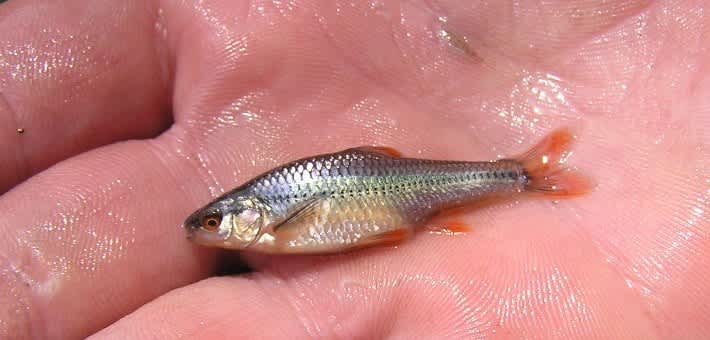Restoring Endangered Topeka Shiner in Missouri
OutdoorHub 07.17.13

Endangered Topeka shiners will be reintroduced in northern Missouri in a partnership among the U.S. Fish and Wildlife Service, the Missouri Department of Conservation and The Nature Conservancy. The Service published a final rule in the Federal Register on July 17, 2013, which paves the way for the reintroduction. Work is expected to begin this summer.
The reintroduction is part of an effort to restore populations of the small fish in Missouri in areas where the Topeka shiner once lived before its numbers declined. The reintroductions would be carried out on lands managed by Missouri Department of Conservation and The Nature Conservancy.
The reintroduction will establish “non-essential, experimental” populations of Topeka shiners in Adair, Gentry, Harrison, Putnam, Sullivan and Worth counties in northern Missouri. This designation, under the federal Endangered Species Act, gives wildlife managers more flexibility in working with the reintroduced Topeka shiners and provides nearby private landowners with reassurance that the presence of a protected species will not affect their activities.
Within the nonessential experimental populations, take (killing, harming, harassing) of Topeka shiners that is incidental to otherwise legal activities, such as farming, forestry and wildlife management, land development and recreation, is allowed. Landowners engaging in legal activities during which Topeka shiners are killed would not be violating the Endangered Species Act. However, intentional take would remain prohibited.
Three nonessential experimental population areas are designated; located in the Big Muddy Creek, Little Creek and Spring Creek watersheds of Adair, Gentry, Harrison, Putnam, Sullivan, and Worth Counties. All the reintroduction sites within these areas are on lands owned by the Missouri Department of Conservation and The Nature Conservancy. Partners will collect Topeka shiners from existing populations and rear them in ponds this summer. Reintroductions will be made during September and October. Missouri Department of Conservation will monitor changes in population distributions to evaluate success of the reintroductions.
The Topeka shiner is a small minnow that lives in small to mid-size prairie streams in the central United States where it is usually found in pool and run areas. Suitable streams tend to have good water quality and cool to moderate temperatures.
Populations of the Topeka shiner have steadily declined, and the species now occupies only about 19 percent of its historical habitat, and only 15 percent of its former range in Missouri. The Topeka shiner was designated a federally endangered species in 1998. Threats to the species include habitat destruction, sedimentation, and changes in water quality. Under the Endangered Species Act, plants and animals listed as endangered are at risk of becoming extinct in the foreseeable future.
For more information on the Topeka shiner, including maps of the non-essential experimental areas, visit http://www.fws.gov/midwest/endangered/fishes/TopekaShiner/.

